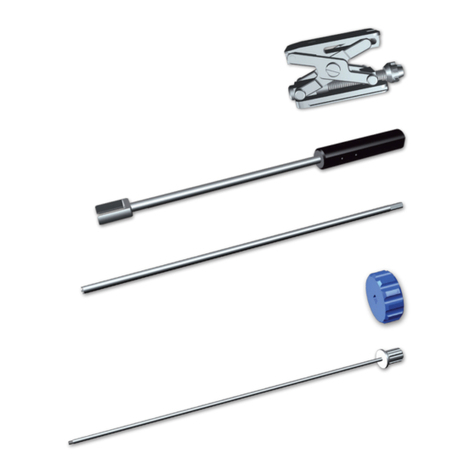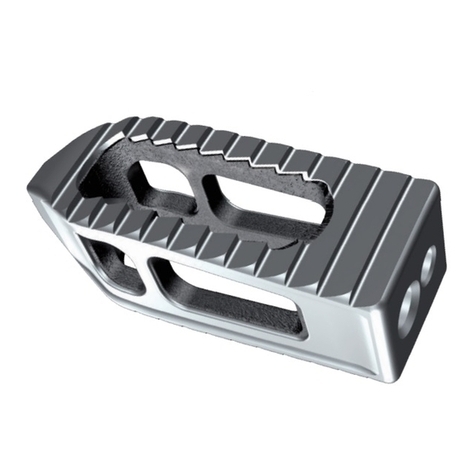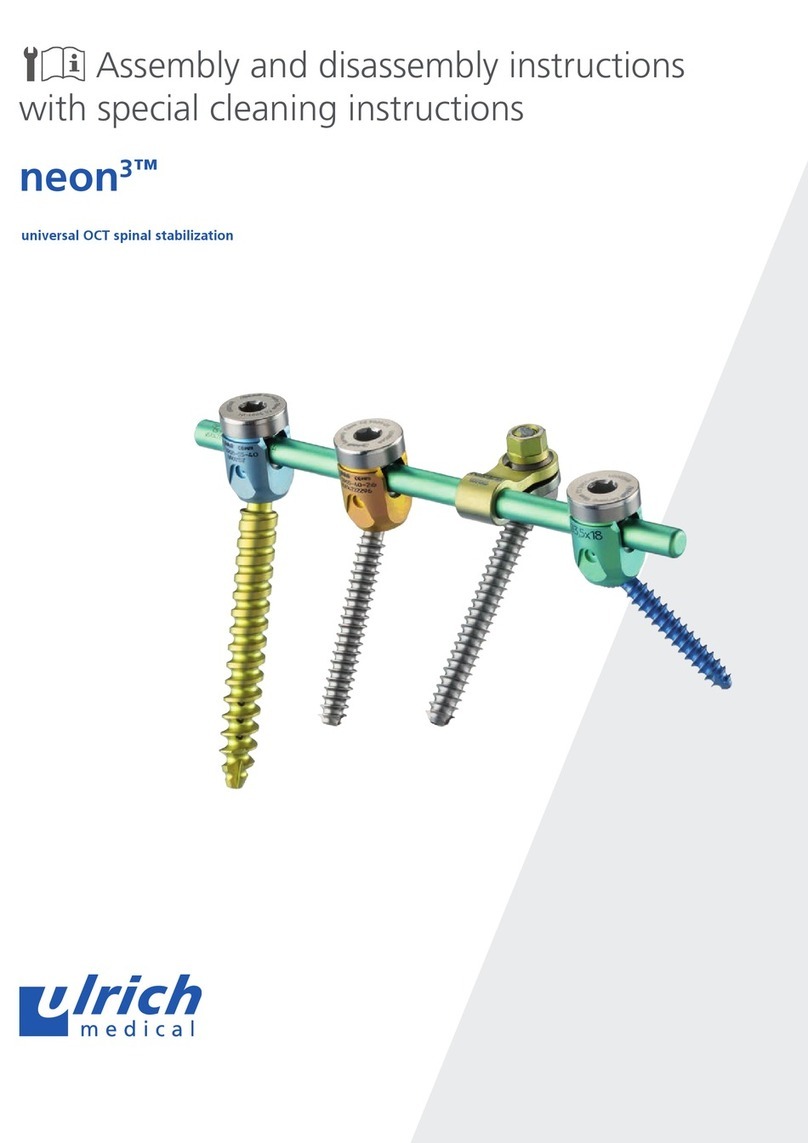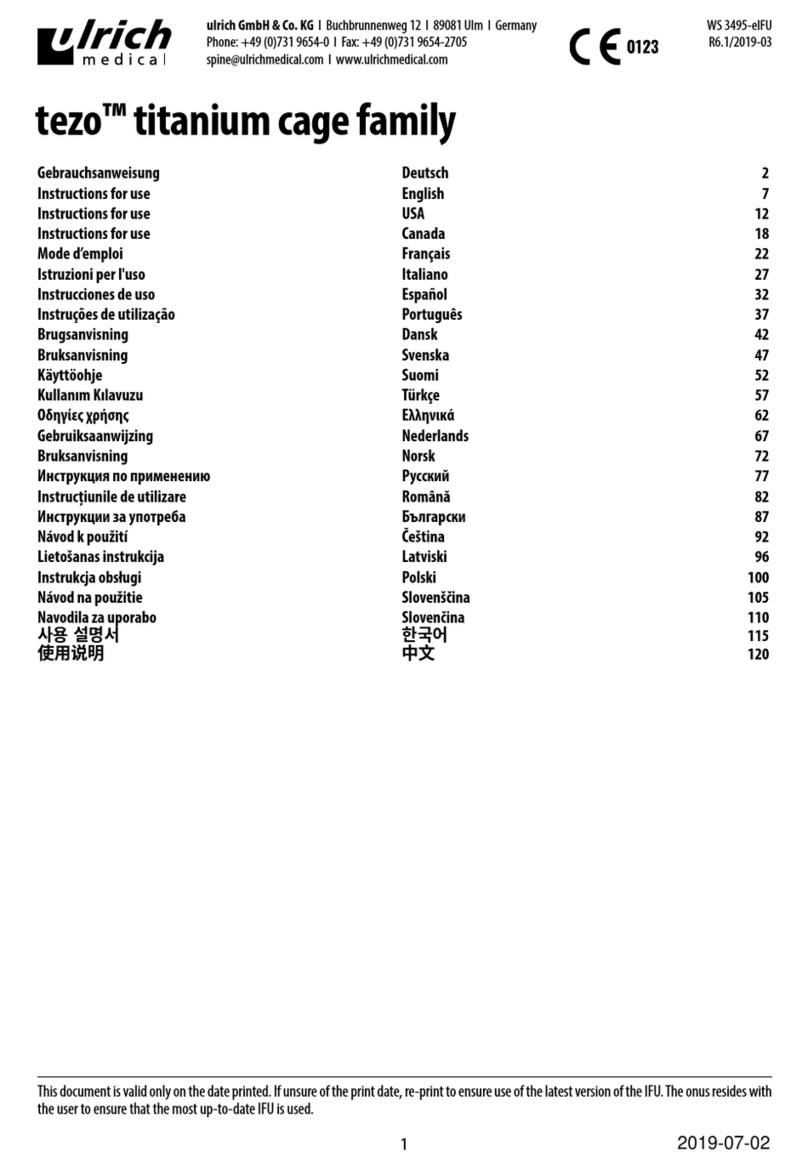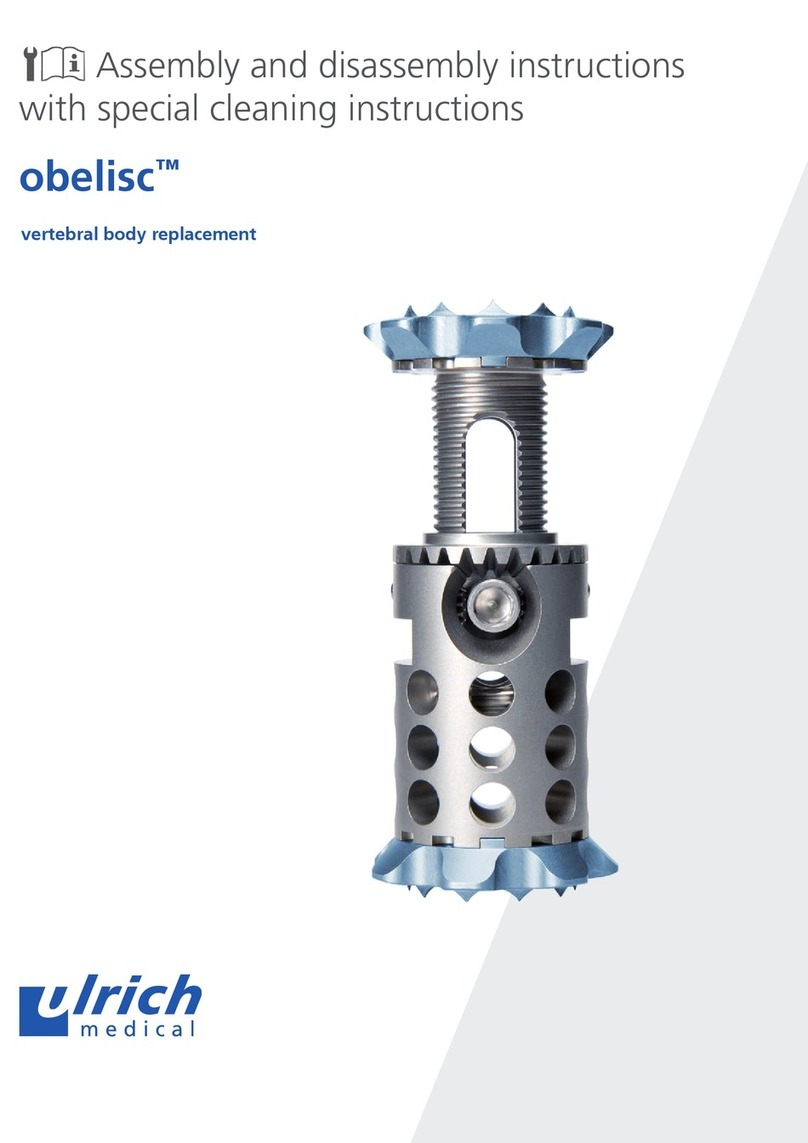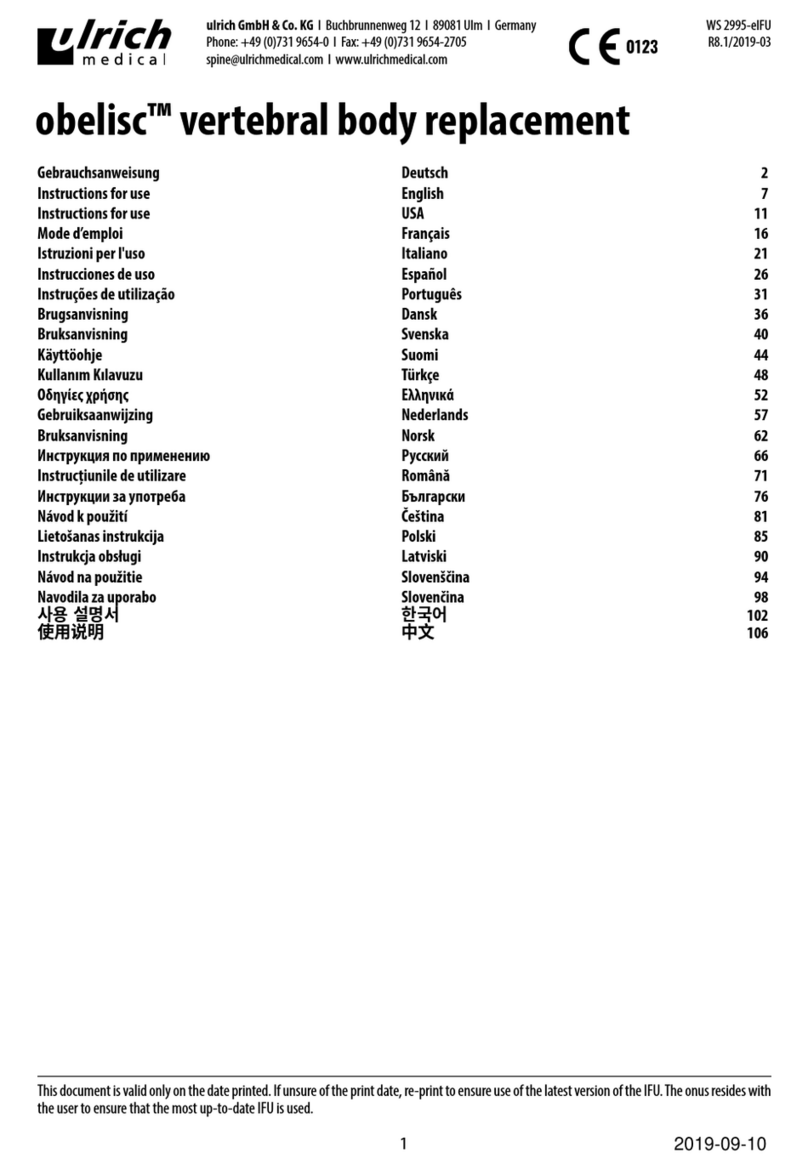
8
This document is valid only on the date printed. If unsure of the print date, re-print to ensure use of the latest version of the IFU.The onus resides with
the user to ensure that the most up-to-date IFU is used.
Cement leakage following augmentation with cement
Adjacent segment degeneration
These possible complications may lead to further surgical interventions (implant removal or stabilization renewal). Other complications
caused by the surgical procedure itself and independent of the implant are:
General surgical risks and complications
Anesthesia and blood transfusion risks as well as positioning damage
Lung complications
Infection
Wound healing disorders
Cardiovascular complications, such as blood loss, thrombosis, embolism, coagulopathy
Gastrointestinal complications, such as gastritis, ileus, ulcer
Neurological complications, such as spinal cord or neural root lesions with temporary or permanent sensory and/or motor disturbances
(bladder and rectal disorders, sexual dysfunction)
Intraoperative injury to blood vessels, massive hemorrhage, stroke, cerebral hemorrhage with potential life-threatening consequences
Injury to organs adjacent to the spine, such as cervical, thoracic and abdominal organs, depending on the region operated on
6 Warnings and precautions
6.1 General
The user has to ensure that the most current versions of the complete product materials provided as overall documentation of the system are on
hand and considered.These are also available at: www.ifu.ulrichmedical.com. A printed copy may be delivered within 7 days, upon request.
This product must be used only by an experienced spine surgeon, under sterile conditions and in an operating room where C-arm is available.
The product is delivered non-sterile and must be sterilized before rst use. Instructions for processing can be found in the "Processing manual
implants and instruments" UH 1100, prepared as part of overall documentation of the system.
The treating physician is responsible for making the proper selection of patients, and for acquiring the training with the system and
experience required for implant selection and placement.The treating physician is also responsible for determining whether to leave the
implant following surgery or to remove it.
The product must be carefully handled and stored. Implants with any kind of damage or scratches must not be used, as product stability
and resistance to fatigue may be aected.
Implants in corresponding ulrich medical systems must be used exclusively with system-specic instruments intended for this purpose,
unless otherwise indicated.
Connecting ulrich medical implants to implant components of other manufacturers is not permitted.
uCentum can be combined with ulrich medical uBase system for sacral, iliosacral and iliac instrumentation. For more information, consult
instructions for use uBase WS 7195. A combination with other internal xators from ulrich medical within an instrumentation is not permitted.
Given the presence of passive layers, corrosion of metal implants is very minimal. Nevertheless, there may be accelerated material fatigue
and the possibility of a break, as well as increased release of metal components in the body. Corrosion is promoted by the components
made of dierent metals coming into contact and by damage to the implant’s surface.The ability to combine the various metal implants
used in the system has been assured. Direct contact with metal implants from other manufacturers is not allowed.
6.2 Preoperative
In the following cases an implantation of uCentum should only be performed after carefully weighing by a medical specialist:
Patients who are in a generally unfavorable medical or psychological condition which could be worsened by the procedure.
Pregnant patients.
Obese patients (higher risk of implant failure).
Smoking patients (higher rate of pseudarthrosis).
Patients with insucient load bearing of the anterior spine if no further measure to stabilize the anterior spine could be performed.
Implantation should only be considered when all other treatment options have been carefully weighed and ruled out. A successful implant
is also inferior to the healthy moving element(s) of the spine. On the other hand, an implant may be an ecient replacement of one or
more severely deformed or degenerated moving elements in order to eliminate pain and achieve good load bearing capacity.
The risks of the procedure and the use of the implant, including any revisions which may be necessary, should be explained to the patient in detail.
The treating physician should conduct with the patient a detailed discussion of the surgical results that may be anticipated, particularly
with regard to potential physical limitations of the implant. The degree of postoperative activity aects the life time of the implant and
the stability of the implant in the bone. Thus, the patient must be informed of the limitations and risks inherent in daily activities and
made aware of special guidelines for movement. The treating physician must assess whether the patient can understand and follow such
instructions. Special attention should be given to postoperative discussion and the need for regular medical monitoring.
Ensure that suitable pre-, intra- and postoperative diagnostic procedures are performed to evaluate and ensure proper implant selection
and placement.
